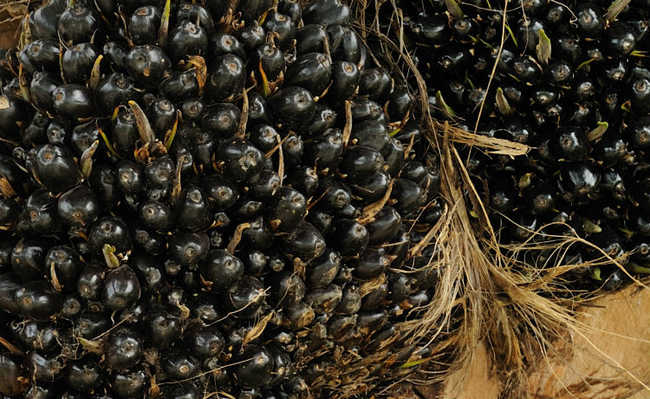Sociobiology: the study of genes in social behavior
Controversial scientific field studies the social behavior of animals and humans from a biological perspective

Edited and resized image by Tobias Adam is available on Unsplash
Sociobiology is a science that proposes the synthesis between two objects that, in general, are studied separately: human societies and societies of other animals. This branch of thought seeks to explain how certain behaviors emerged through evolution or how they were shaped by natural selection, suggesting that social behaviors in the animal world, including the human, would have a genetic basis. One of its main exponents today is the researcher Richard Dawkins.
- What is the trophobiosis theory
history of sociobiology
There is some controversy over how to date the beginning of sociobiology. Some versions point to the human ethology (biological study of animal behavior) books that were successful in the 1960s and 1970s, while others go back to pioneers in population mathematics, such as Ronald Fisher, Sewall Wright, and John Haldane, in the 1960s. 1930.
Although sociobiological ideas already exist, the term “sociobiology” was only popularized in the second half of the 1970s, with the release of the book Sociobiology: The New Synthesis (translated as Sociobiology: The New Synthesis), by biologist Edward O. Wilson. In it, Wilson describes science as close to behavioral ecology, with both linked to population biology, with evolutionary theory being the heart of the three entities.
In his book, Wilson made many controversial statements about ethics, even asserting that scientists and humanists should look into the possibility of "biologizing" this field of study, taking it out of the hands of philosophers. Furthermore, he praised positivism, having attributed its short duration to ignorance about how the human brain works, even saying that people are naturally xenophobic.
Wilson, however, only hinted at such claims, failing to show how biology would be decisive in these matters. The author was not the only one to generate heated debates with scathing claims: other sociobiologists like David Barash and Pierre Van den Berghe were even more radical in their claims, but they received less attention than Wilson.
The term “sociobiology” suffered a lot of resistance thanks to these assertions, especially by ethologists, who did not want to be associated with Wilson's statements. There are also those who claim that the use of the term “evolutionary psychology” was due in part to the bad reputation that “sociobiology” gained.
What does the field of studies say?
Sociobiology works with the hypothesis that behaviors and feelings such as altruism and aggressiveness, for example, are, in part, genetically determined - and not just culturally or socially acquired. In other words, social institutions could be the result of genetic conditioning or the adaptive process of a certain population.
Sociobiologists believe that genes influence social behavior and thus the functioning of society as a whole. It is common for them to consider social behaviors and habits as phenotypes, which are visible or detectable manifestations of genes. As researchers do not yet have concrete evidence that ideas or customs can be determined by genes, they are currently working with the hypothesis that the genetic code would be influenced, throughout the individual's developmental stages, by the environment and population density.
For example, a society may have the rate of aggressiveness among its members increased in times of food scarcity, caused both by environmental factors and the population explosion. At the same time, an individual is also capable of becoming quite aggressive at a special stage in his life, which is adolescence. Therefore, sociobiology concludes that social organization, as well as behavior, are likely to be treated as "organs" of high adaptive value, as they adapt to prevailing circumstances.
Assuming that genes are behind social behaviors, most sociobiologists neutralize the opposition between the innate and the acquired. The common idea is that every genetically determined character brings an expression from the environment, based on the definition of the phenotype. So the theory is that: if a person with a genetic tendency toward aggression is born into an extremely pacifist society, that trait is unlikely to manifest itself; on the other hand, a person who lives in a place where it is necessary to compete for food can become aggressive.
There is disagreement among scientists about how the weight of each genetic component influences behavior. Three views stand out in the analysis of how natural selection works within this area. Some believe that natural selection operates on the group (species, population, kindred), others think that it takes place individually and there are still those who believe that natural selection is conceived as a force oriented to the individual (admitting some selections in group).
The first hypothesis concerns altruism, considering it as the great motivator of social behavior. Thus, if natural selection acts to preserve or extinguish a grouping, individuals increase the chances of survival and growth for the entire group if they act altruistically.
The second aspect refers to selfishness. Adherents of individual-oriented natural selection assume that the concrete unit is the individual organism, finding it impossible for the environment to exert selective pressures on a group. They also believe that each member of a society seeks only its own survival, regardless of whether it will harm fellows of its kind. Natural selection, therefore, would act to preserve or eliminate individuals, so that each one would be better adapted as it was more selfish.
The third opinion, in turn, defends the idea that natural selection acts as an individual-oriented force, considering that group selection forms are possible. This strand emphasizes selfishness, but it also encompasses altruism as a motivator of behavior in society. According to this group, natural selection acts mainly on individuals, so they must act mostly selfishly, even if it harms other fellows. However, they understand that there are cases where natural selection acts on groups and then it would be necessary for individuals to act altruistically.
Another point of divergence is the role of human sociobiology. While Robert Triveres believes that the behavior of chimpanzees and humans may be analogous, given their similar evolutionary history, John Maynard Smith finds such an application unlikely, restricting his studies to animals.
For those who believe in human sociobiology, the behavioral similarities between humans and other mammals, especially primates, serve as evidence that there is a genetic component in the species' social behavior. Aggression, male control of females, prolonged paternal care and territoriality, for example, are some elements pointed out as common between humans and apes.
While there is great diversity in human social forms, sociobiologists believe that this does not invalidate the theory that genes are behind these cultural patterns of behavior. They explain that the high variability of customs shows the adaptive function of culture in relation to the environment, linking the variety presented by cultures to individual behavior. Therefore, genes promote malleability of social behavior by suffering the effects of natural selection (acting on the individual organism), guaranteeing the human species sufficient potential for survival.
Looking at evolution, we see that behavior in general has been refined, becoming more complex than simply maximizing survival and reproduction. For Dawkins and other sociobiologists, this is a genetically determined process. Above all, sociobiology defends a Darwinian view, in which the behavior of humans and other animals is oriented towards the survival of the individual, the group and the species.
- Ecocide: ecological suicide of bacteria to humans
Criticism of this aspect
Sociobiology has raised a lot of controversy since its inception. It is possible to divide the criticisms it received into two large groups. The first questions their scientific credentials, judging sociobiology as “bad science”. The second refers to the political aspect and is divided into two subgroups: those who believe that sociobiology intentionally does bad science, seeking deep down to justify certain reactionary policies; and those who believe it to be dangerous, regardless of the wishes of its proponents.
Critics point out that, as a highly speculative discipline, sociobiologists should be wary of statements such as "new discoveries about human nature" on controversial issues such as xenophobia and sexism. An article published by the magazine nature, in 1979, “sociobiology critics claim fears come true” ("Critics of sociobiology claim that fears can come true", in free translation) shows how right-wing extremist groups in France and Britain were using authors such as Edward Wilson, Dawkins and Maynard Smith to justify racism and anti-Semitism as natural elements and therefore impossible to be destroyed.
On the other hand, sociobiologists accuse their critics of rejecting sociobiology only out of ideological differences and fear of inconvenient truths that would run counter to their ideals.
Among many criticisms, sociobiology has been accused of being deterministic, reductionist, adaptationist, of caricature of natural selection and Darwinism, and of being irrefutable. In general, it was accused of “bad science” - this criticism had as its starting point the article presented to the Royal Society in 1979, “The Spandrels of San Marcos and the Paglossian Paradigm: A Critique of the Adaptationist Program”, which generates discussions until today.










